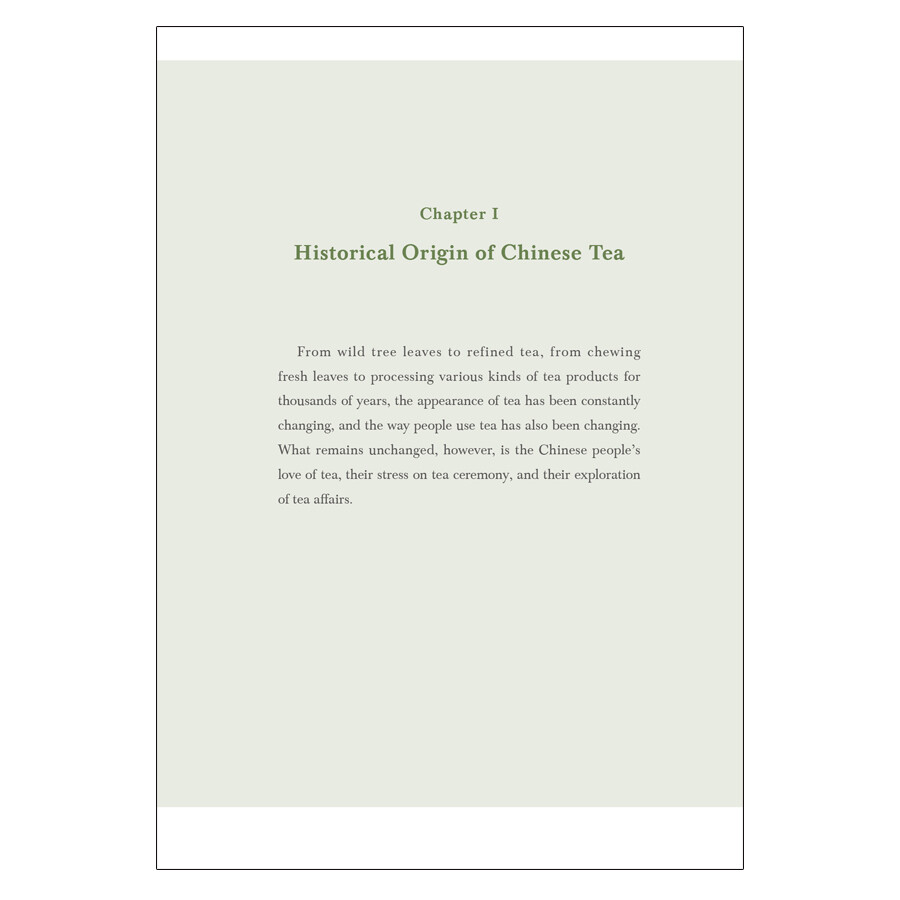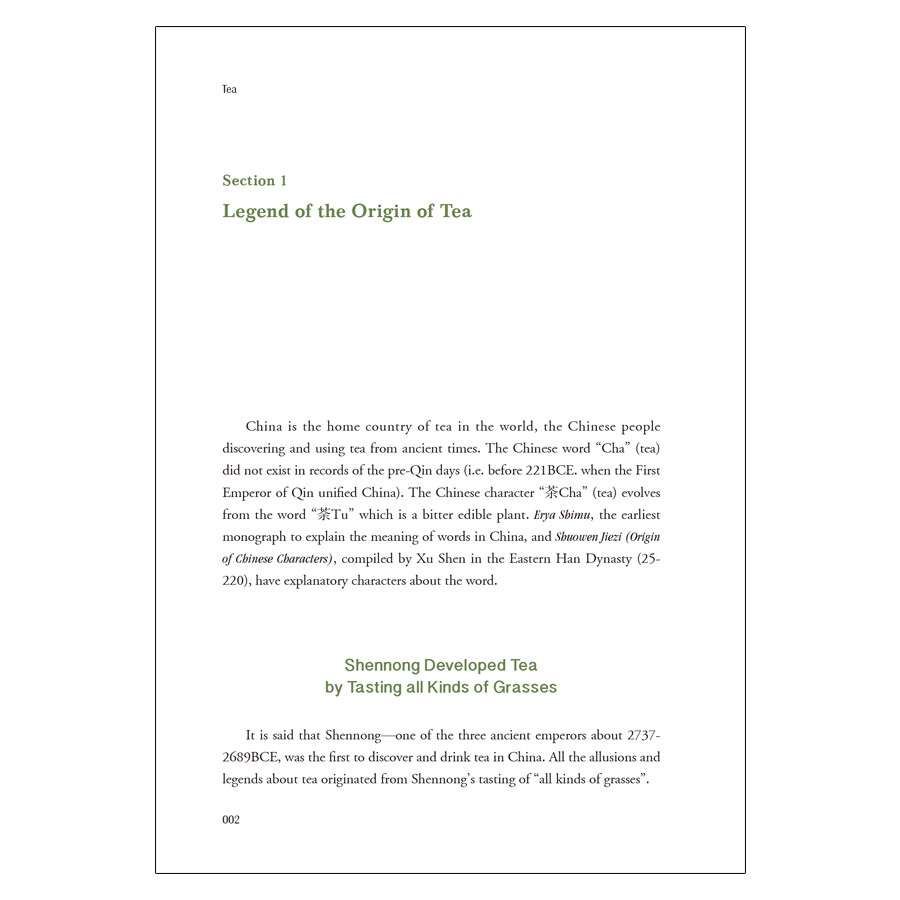Sample Pages Preview



 Preface
Preface
Tea is hailed as a symbol of Chinese culture, a unique heritage, and also a special taste. The 5,000-year history of Chinese tea also reflects the profound history of Chinese culture. Like Chinese porcelain, clothing, architecture, gardens and delicacies, Chinese tea is inseparable from the social environment, cultural atmosphere, international exchanges and technological progress prevailing at any specific time. It not only affects and changes people’s living habits and attitudes, but also has profound impact on the lifestyle of neighboring countries and those stretching along the Belt and Road network.
Tea is China’s business card to the world. The pronunciation of the word “tea” in other parts of the world is based on pronunciation of the local dialect of the word “tea” in the north and south of China. In the past few hundred years, the tea industry is one of the main businesses and trade commodity in many diverse countries. Portugal, the Netherlands and the United Kingdom successively dominated at sea. These maritime “big powers” all became deeply involved in the fragrant and soft Chinese tea that became an important worldwide commodity.
The trade was once in the hands of powerful companies with strong political coloring, such as the East India Company operating across the vast distances of the East Indies. At that time, the largest trade commodity of the company was tea. Similarly, in the early days of the Establishment of the United States, the War of Independence had just ended and the Treasury was. It mainly relied on the trade of local American ginseng and Chinese tea and other bulk commodities to complete the original accumulation of capital. At present, in Boston, birthplace of the American independent movement, this is illustrated by the Boston Tea Museum.
In addition to mineral water, the biggest beverage in the world market is Black Tea. However, in China, Black Tea is translated as “red tea”. So why should this be so? When the British first saw the dark dry tea, they decided to call it Black Tea. Real Black Tea fermented with microorganism is dark in color, so is known as Dark Tea which, as such, could not attract consumers. Calling it red tea helped overcome market prejudice.
Of course, the name of any kind of tea is just a symbol, and only taste can be quantified by data. Therefore, the authors, in writing this book based it on science to reflect reality.
This work is based on the study and the tasting of numerous types of tea.
The 5,000 years of tea history also involves many interesting stories related to historical figures and famous tea allusions, to show its importance in Chinese life.
Zhao Shuxin
September 28, 2020



